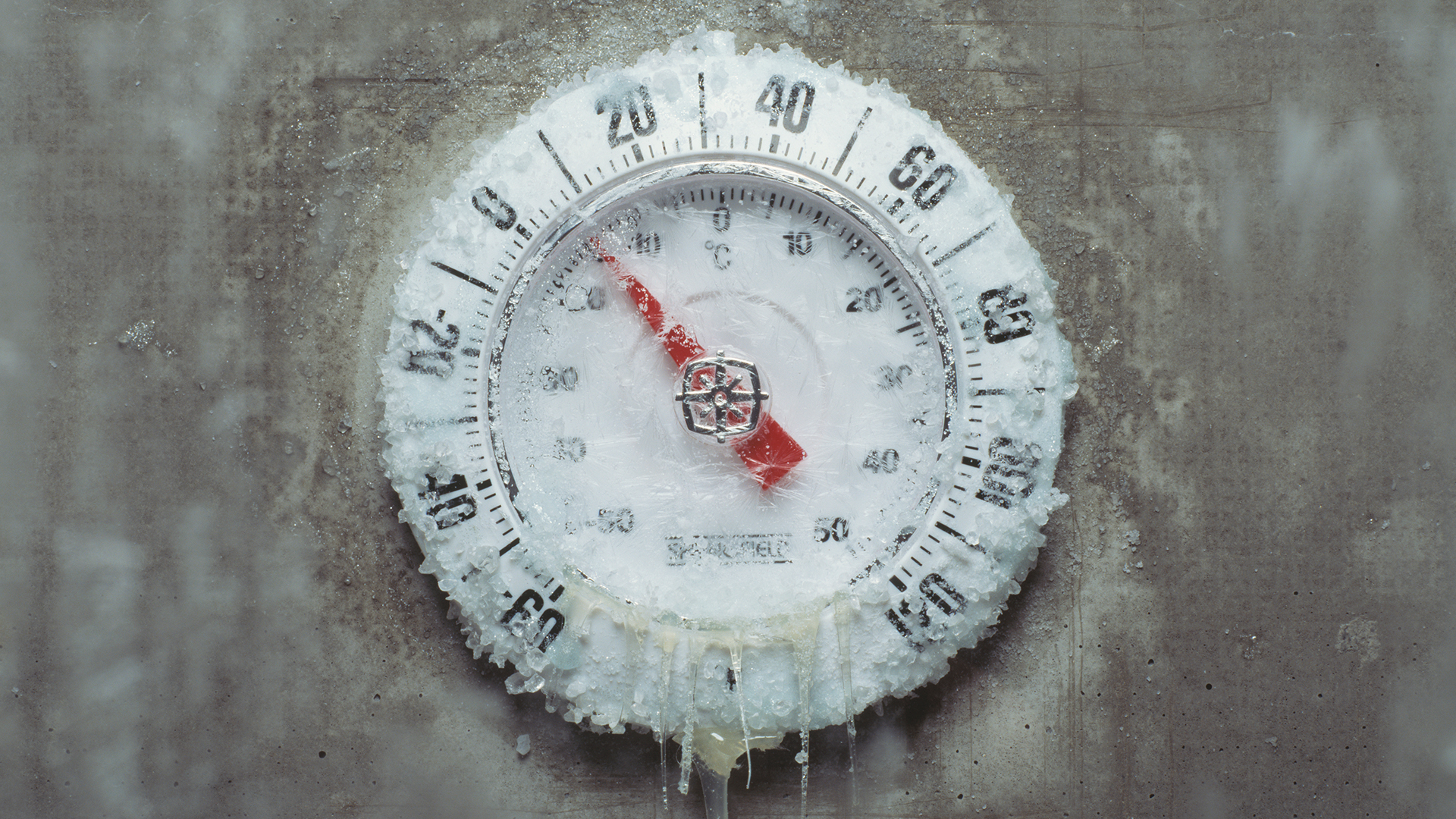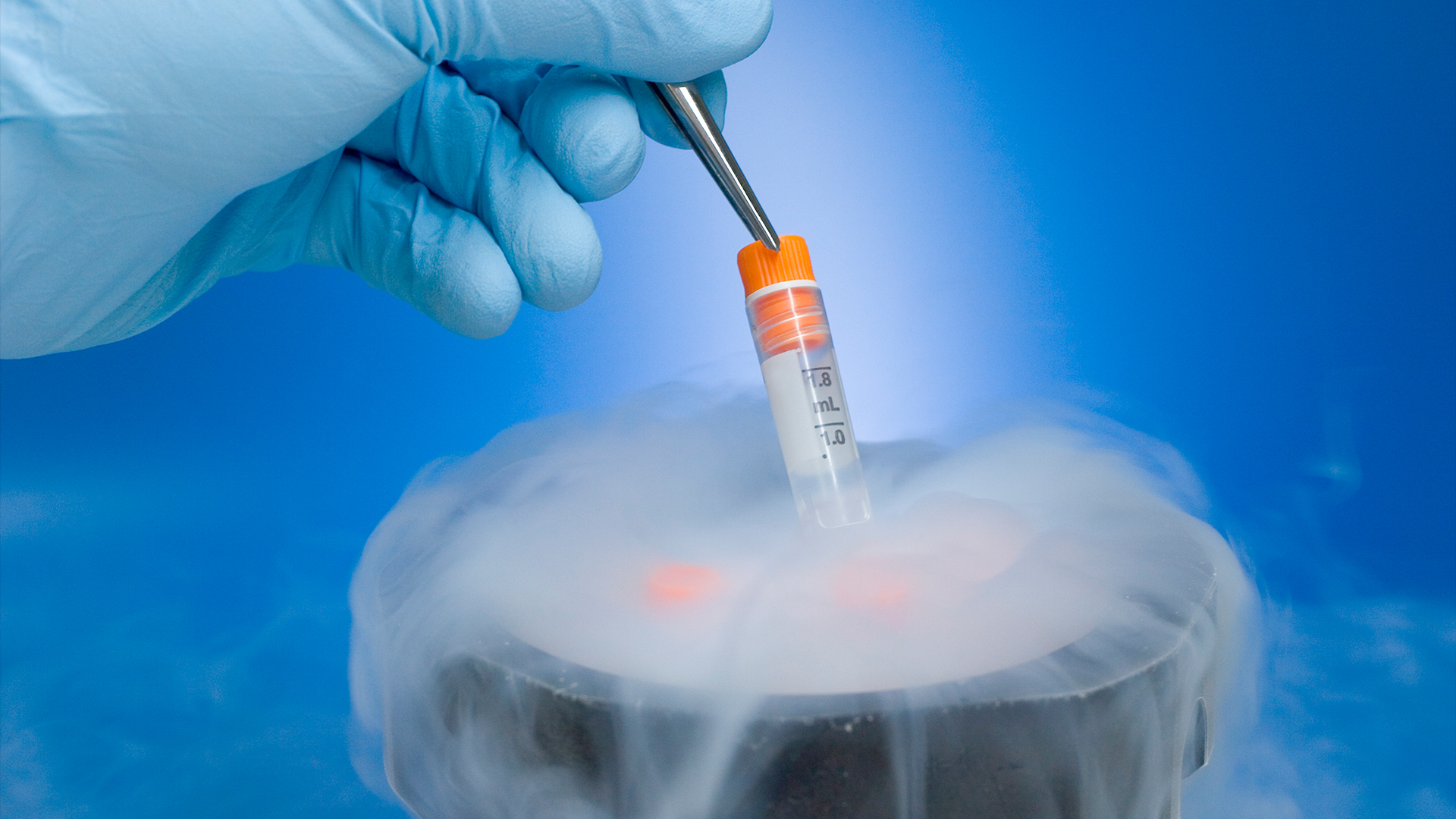
Is it possible to reach absolute zero?
To reach absolute zero, all of the particles within an object have to stop moving.

Absolute zero is the lowest theoretical temperature, which scientists have defined as minus 459.67 degrees Fahrenheit (minus 273.15 degrees Celsius). That's even colder than outer space. So far, nothing we know of has reached absolute zero. But is it even possible to achieve this chilling milestone?
To answer this question, let's unpack what temperature actually is. We tend to think of temperature as how hot or cold something is, but it's actually a measure of the energy or vibrations of all the particles in a system. Hot objects have more energy, so their particles can vibrate more quickly. The point at which particles have no energy at all — and, therefore, stop moving — is what's defined as absolute zero.
Scientists are interested in reaching these low temperatures because quite a few interesting quantum effects emerge when particles are slowed down. A fundamental principle in quantum mechanics is wave-particle duality — the phenomenon in which a particle such as a photon of light can behave either as a particle or a wave, said Sankalpa Ghosh, a theoretical condensed matter physicist at the Indian Institute of Technology Delhi.
When dealing with quantum mechanical particles, it's important to remember their "indistinguishability" — "it's not possible to track the particles or waves individually as we can with larger objects," Ghosh told Live Science in an email. "The origin of this can be traced back to the famous Heisenberg Uncertainty Principle that quantifies the probabilistic nature of quantum mechanical measurement [meaning that when a particle's position is precisely measured, its momentum is less precisely known, and vice versa]. This probabilistic nature gives a wave-like character to a quantum mechanical particle."
The extent of this quantum wave-like behavior is expressed by a ratio of the thermal de Broglie wavelength and the interparticle distance. At normal temperatures, this quantum behavior is negligible, but strange effects begin to emerge as the particles get colder.
"[This ratio] gets larger as the temperature goes down and at absolute zero it is actually infinity," Ghosh said. "Quantum phenomena like super fluidity (flow without friction), superconductivity (current flows without any resistance), and ultracold atomic condensation all happen due to this."

Early ultracold experiments in the 1990s used a technique known as laser cooling to begin probing these effects. "The light exerts a force on the atoms which slows them down to reasonably cold temperatures, around 1 kelvin (minus 272.15 C or minus 457.87 F)," said Christopher Foot, an ultracold physicist at the University of Oxford. "[That's low enough] to see quantum behavior in solids and liquids but for the gases we study, we need 10s of nano-kelvin temperatures to get these quantum effects."
Sign up for the Live Science daily newsletter now
Get the world’s most fascinating discoveries delivered straight to your inbox.
The lowest temperature ever recorded in a lab was achieved by a group in Germany in 2021. The team dropped magnetized gas atoms down a 400-foot (120 meters) tower, constantly switching the magnetic field on and off to slow the particles to almost a complete standstill. In this type of experiment, known as magnetic trap cooling, the gaseous particles reached an incredible 38 picokelvin — 38 trillionths of a degree Celsius above absolute zero and well within the range to begin observing quantum effects in gases.
But is there any point in trying to cool materials even further? Probably not, according to Foot. "We're much more interested in these quantum effects than reaching absolute zero," he said. "Laser-cooled atoms are already used in the atomic standards which define universal time (atomic clocks) and in quantum computers. Lower-temperature work is still at the research stage, and people are using these methods to test universal physical theories."
At present, it's not possible to cool that final 38 trillionths of a degree — and several hurdles would have to be overcome for it to become a reality. In fact, even if we were to reach absolute zero, we might completely miss it due to imprecise measuring techniques.
"With current instruments, you couldn't tell whether it was zero or just a very, very small number," Foot said. "To measure absolute zero, you would actually need an infinitely accurate thermometer, and that's beyond our current measuring systems."

Victoria Atkinson is a freelance science journalist, specializing in chemistry and its interface with the natural and human-made worlds. Currently based in York (UK), she formerly worked as a science content developer at the University of Oxford, and later as a member of the Chemistry World editorial team. Since becoming a freelancer, Victoria has expanded her focus to explore topics from across the sciences and has also worked with Chemistry Review, Neon Squid Publishing and the Open University, amongst others. She has a DPhil in organic chemistry from the University of Oxford.










